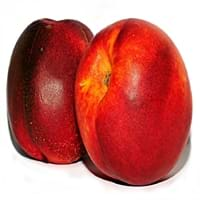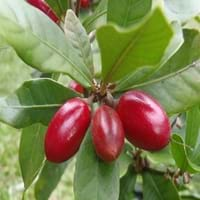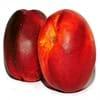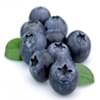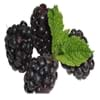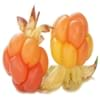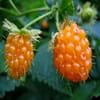Health Benefits
Cancer prevention, Heart care
Good for diabetics, Improves well-being, Miraculin/miracle fruit makes sour things taste sweet
General Benefits
Anti oxidant properties, Boosts immune system, Digestive aid, Eye care, Helps in weight loss, Maintains healthy cholesterol level
Has taste modifying effect
Skin Benefits
Anti-aging benefits, Reduces wrinkles, Skin rejuvenation
NA
Hair Benefits
Protects hair
NA
Allergy Symptoms
Anaphylaxis, Asthma, Breathing difficulty, Diarrhea, Hives, Itching, Itchy eyes, Skin rash, Sneezing, Swelling of mouth, tongue or lips, Tingling sensation in mouth, Vomiting, Watery eyes, Wheezing
Itching, Skin rash
Side Effects
Allergic reaction, Headache, Nausea
Changes taste of food eaten after this fruit, Coagulation
Best Time to Eat
Best if taken as a breakfast (or empty stomach), As a snack in the late afternoon, Eat the fresh ones, avoid mixing with any other foods, don't eat after meal., Morning time (before lunch)
As a snack in the late afternoon, Eat the fresh ones, avoid mixing with any other foods, don't eat after meal., Morning time (before lunch)
Protein to Carb Ratio
Not Available
Vitamin A (Retinol)
Not Available
Vitamin B1 (Thiamin)
Not Available
Vitamin B2 (Riboflavin)
Not Available
Vitamin B3 (Niacin)
Not Available
Vitamin B5 (Pantothenic Acid)
Not Available
Vitamin B6 (Pyridoxin)
Not Available
Vitamin B9 (Folic acid)
Not Available
Vitamin C (Ascorbic Acid)
Vitamin K (Phyllochinone)
Not Available
Lutein+Zeaxanthin
Not Available
Water Content
Not Available
Calories in Fresh Fruit with Peel
Not Available
Calories in Fresh Fruit without Peel
Not Available
Not Available
Calories in Frozen Form
Not Available
Not Available
Calories in Dried Form
Not Available
Calories in Canned Form
Not Available
Not Available
Calories in Juice
Not Available
Calories in Jam
Not Available
Calories in Pie
Not Available
Season
Autumn, Summer
Monsoon
Varieties
Arctic Jay, Artic Rose, Artic Star, Armking, Desert Dawn, Fairlane, Fantasia, Silver Lode, Snow Queen, Stanwick and Stark Sunglo
Gymnema Sylvestre and Thaumatococcus Daniellii
Color
Orange, Pink, Red, Yellow
Dark red
Inside Color
Yellow
Greyish-white
Soil Type
Sandy loam
Well-drained
Climatic Conditions
Sunny, Warm
Rainfall
Facts about
- The name ‘nectarine’ is with reference to the sweet food the gods eat, ‘nectar’.
- Nectarines are sometimes called ‘shaved peaches’ because their skin is smooth with no fuzz.
- The name 'Miracle' because of the magical experience you get after eating it.
- When you have lemon after eating this fruit, it tastes sweet as if it is added with sugar.
- It is also used as natural sweetener.
Other Countries
Argentina, Chile, Egypt, Greece, Iran, Italy, Spain, Turkey, United States of America
NA
Top Importer
Germany
Not Available
Top Exporter
Spain
United States of America
Botanical Name
Prunus persica
Synsepalum Dulcificum
Synonym
Not Available
Miracle Berry, Miraculous Berry and Sweet Berry
Subkingdom
Tracheobionta
Tracheobionta
Division
Magnoliophyta
NA
Subclass
Rosidae
Asteridae
Family
Rosaceae
Sapotaceae
Species
P. persica
S. dulcificum
Generic Group
Rose
Not Available
Difference Between Nectarine and Miracle fruit
We might think that Nectarine and Miracle fruit are similar with respect to nutritional value and health benefits. But the nutrient content of both fruits is different. Nectarine and Miracle fruit Facts such as their taste, shape, color, and size are also distinct. The difference between Nectarine and Miracle fruit is explained here.
The amount of calories in 100 gm of fresh Nectarine and Miracle fruit with peel is 44.00 kcal and Not Available and the amount of calories without peel is Not Available and Not Available respectively. Thus, Nectarine and Miracle fruit belong to Low Calorie Fruits and Low Calorie Fruits category.These fruits might or might not differ with respect to their scientific classification. The order of Nectarine and Miracle fruit is Rosales and Ericales respectively. Nectarine belongs to Rosaceae family and Miracle fruit belongs to Sapotaceae family. Nectarine belongs to Prunus genus of P. persica species and Miracle fruit belongs to Synsepalum genus of S. dulcificum species. Beings plants, both fruits belong to Plantae Kingdom.
